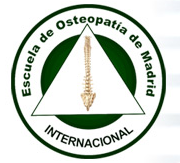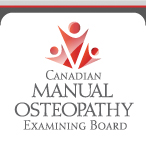Osteopathy and Childhood
by Sydney L. Murray
 “The goal with your patients is to find the way to healthy function within the mechanism that they bring to you. Study the Life principle and come closer to understanding what I mean by the “Breath of Life.” To the digger who will take time to dream and the dreamer who will wake up and dig, the science of osteopathy will unfold into a magnitude equal to that of the heavens.” -William
“The goal with your patients is to find the way to healthy function within the mechanism that they bring to you. Study the Life principle and come closer to understanding what I mean by the “Breath of Life.” To the digger who will take time to dream and the dreamer who will wake up and dig, the science of osteopathy will unfold into a magnitude equal to that of the heavens.” -William G. Sutherland, DO
According to The New York Times, osteopathic medicine is one of the fastest-growing medical professions in the United States. More than 50,000 osteopathic physicians practice in recognized specialties such as obstetrics, neurosurgery, cardiology, and internal medicine. Just a fraction of them are certified to practice cranial osteopathy because only licensed physicians who have completed additional training in this specialty may provide this drugless, non-invasive medical treatment.
“I like to treat problems no one else can help,” says Dr. Eric Dolgin, DO, F.C.A., an osteopathic physician whose expertise in cranial osteopathy is attracting patients from all over the country.
Dolgin is recognized as one of the top practitioners in this field in California. During his 25 years in practice, Dr. Dolgin has proven that cranial osteopathy can achieve positive results in many cases where other approaches have failed.
He has made breakthroughs in the treatment of children with mild to moderate autism, learning disabilities, and other difficult to treat conditions. In The Autism Perspective, a national magazine in which Dr. Dolgin was featured, one mother described her autistic son after six weeks of treatment with Dr. Dolgin: “There always seemed to be a wall that prevented him from easily taking in information, but now he loves to learn.” Another mother said that her son, as a result of his treatment with Dr. Dolgin, “wants to play with other children for the first time in his life, and even likes hugging them.”
Recently I had the opportunity to speak with Dr. Dolgin.
Vision Magazine: What is the practice of Osteopathy?
Dr. Eric Dolgin: There are two types of medical doctors in the United States: an MD and a DO. A DO is a Doctor of Osteopathic Medicine. Both have unlimited licenses to perform surgeries, make diagnoses, and prescribe medications, but the difference is that to become a DO, you need an additional 300-600 hours of training to learn about the muscular-skeletal system, the structure and function of the body, and the relationships within the muscular-skeletal system.
DOs can specialize in any number of things. We are all taught osteopathic manipulation and only about 20 percent use it. And then there is one to two percent who specialize in using osteopathic treatments.
VM: How does osteopathy help with autism?
ED: Part of my training was at the Osteopathic Center for Children in San Diego and that is where I first learned how to treat children. I’ve treated lots of kids with neural-developmental problems and disabilities. Over the past ten years I’ve had a large increase in the number of autistic patients I treat. I’ve noticed that I could do a pretty good job of helping them. Curing them is one thing, but it’s generally not so easy as it takes a multi-disciplinary approach. It’s rare when that happens, especially if they have severe autism.
But they can improve a great deal in terms of how they function. I got interested in autism simply because of the increased number of patients I was seeing and the fact that they responded fairly well to treatment.
They increase eye contact, are more sociable and less aggressive, and they are able to learn more and do better in school. Some who weren’t able to speak start talking and others who haven’t been able to function in certain situations become capable in those circumstances.
VM: Does osteopathy offer you any insight into the causes of autism?
ED: Autism has many different causes. One of the major contributors are structural problems in the body and by treating those, we can increase the level of health and functioning which allows everything to work better.
Usually there are many things you identify. Often there is a genetic background; on top of that at least half of the patients I see have had a history of having an MMR (Measles, Mumps and Rubella vaccination) about 3-6 months prior to the problem starting. Further, if they take Tylenol before getting this vaccination, from what I have seen, there is a greater chance for problems. They have bigger reactions, because what happens is that the Tylenol will suppress the initial reaction and then something else occurs which is less healthy.
VM: What are the origins of osteopathy?
ED: Osteopathy was started in the 1800s by a physician named Andrew Taylor Still, who had the idea that the structure and function of the body was interrelated. According to Still, there is a unity of function in the body and everything affects everything else. He also believed that the body was designed to heal itself. Still set up rules of training and osteopathy became quite popular at the beginning of the last century.
Then in the 20s, one of his students, William Sutherland, DO, had some ideas to expand upon the principles of osteopathy. Sutherland considered the head as part of that unity of the body. The bones of the head gently move with the rhythmic fluctuation of the cerebral spinal fluid in the central nervous system and all of this is integral to health. Knowing these principles, he devised ways of treating the whole body.
VM: Please tell me about the Kid’s Brain Trust.
ED: I noticed with the autistic children who had neural-development problems that the ones whose parents stuck with treatment usually had the best results. However, because osteopathy is not as well known as other treatments, by the time they made it to my office, many were almost out of money. I would get about halfway through what I wanted to do and they wouldn’t have any money left for treatment.
It was frustrating for them and it was frustrating for me because I knew I could do a lot more. So we decided to set up an organization to supplement payment in low-income families to get their autistic children treated with osteopathy.
That’s what the Kid’s Brain Trust is about: treating neural-developmental problems and helping the parents with payment when they otherwise can’t afford it. We probably help a couple hundred children a year. Usually I see patients whom no one else can help. They usually make the rounds to everybody and then come to me after they’ve been told there’s nothing more they can do and that their problem isn’t treatable. The reason I am able to have success is simple: we’re taught to treat the health and not the disease. When you change your point of view, it makes a world of difference.
VM: What are some of the other conditions in children you’ve been able to help?
ED: Let’s start with newborns: we treat colic, plagiocephaly, nursing problems, spitting up and reflux, constipation and torticollis. With toddlers and children, we treat allergies, asthma, bronchitis, colds and ear infections, also known as chronic otitis media (the word otitis is Latin for “inflammation of the ear,” and media means “middle”). People who stay in our practice get an 80-90 percent cure rate.
There was a study showing that children who received antibiotics for otitis media had an 800 percent chance of developing chronic otitis media. Clearly they are better off treating this condition with simple measures rather than antibiotics.
VM: What are you looking forward to in the next year?
ED: I anticipate treating more children and expanding the Kid’s Brain Trust to help as many children as possible. I also intend to do more research with autism.
Dr. Eric Dolgin is committed to helping his patients—both children and adults—reach a level of health and well-being that he believes is our birthright. In 2001, Dr. Dolgin established the Santa Monica Osteopathic Physicians Building, a medical facility that houses doctors specializing in osteopathy manual medicine with a subspecialty in osteopathy in the cranial field.
The clinic is located at 2128 Pico Boulevard, Santa Monica, CA 90405. For more information on the work of Dr. Dolgin, visit www.osteohome.com or call 310.664.8818.
© 2008 Vision Magazine. All Rights Reserved
1281 University Ave., Ste. G San Diego, CA 92103
Phone: 619.294.2393 • No. California: 408.293.2899 • Toll
Free: 866.804.8444 • Fax: 619.296.1910 • Email:
comments@visionmagazine.com
Go to Content








 11:00
11:00
 Daniel Enriquez de Guevara
Daniel Enriquez de Guevara





























.jpg)






















0 comentarios :
Publicar un comentario